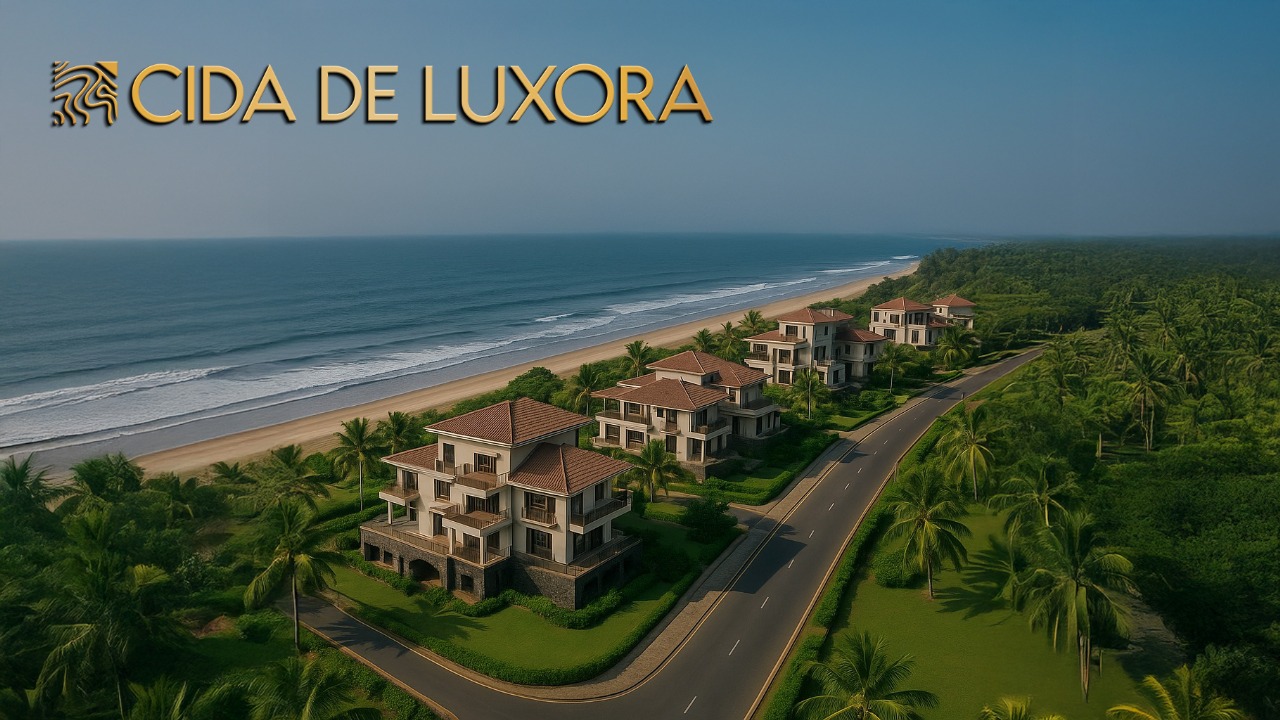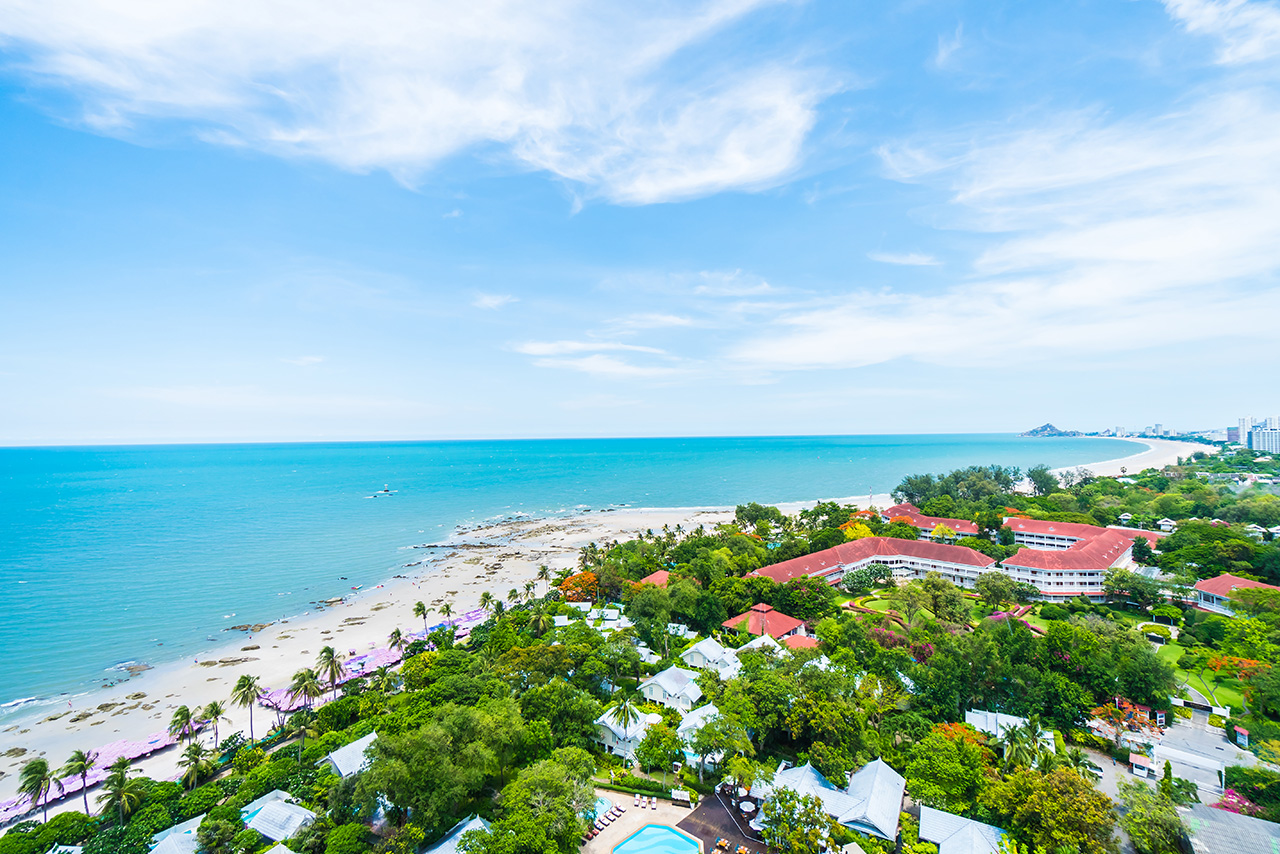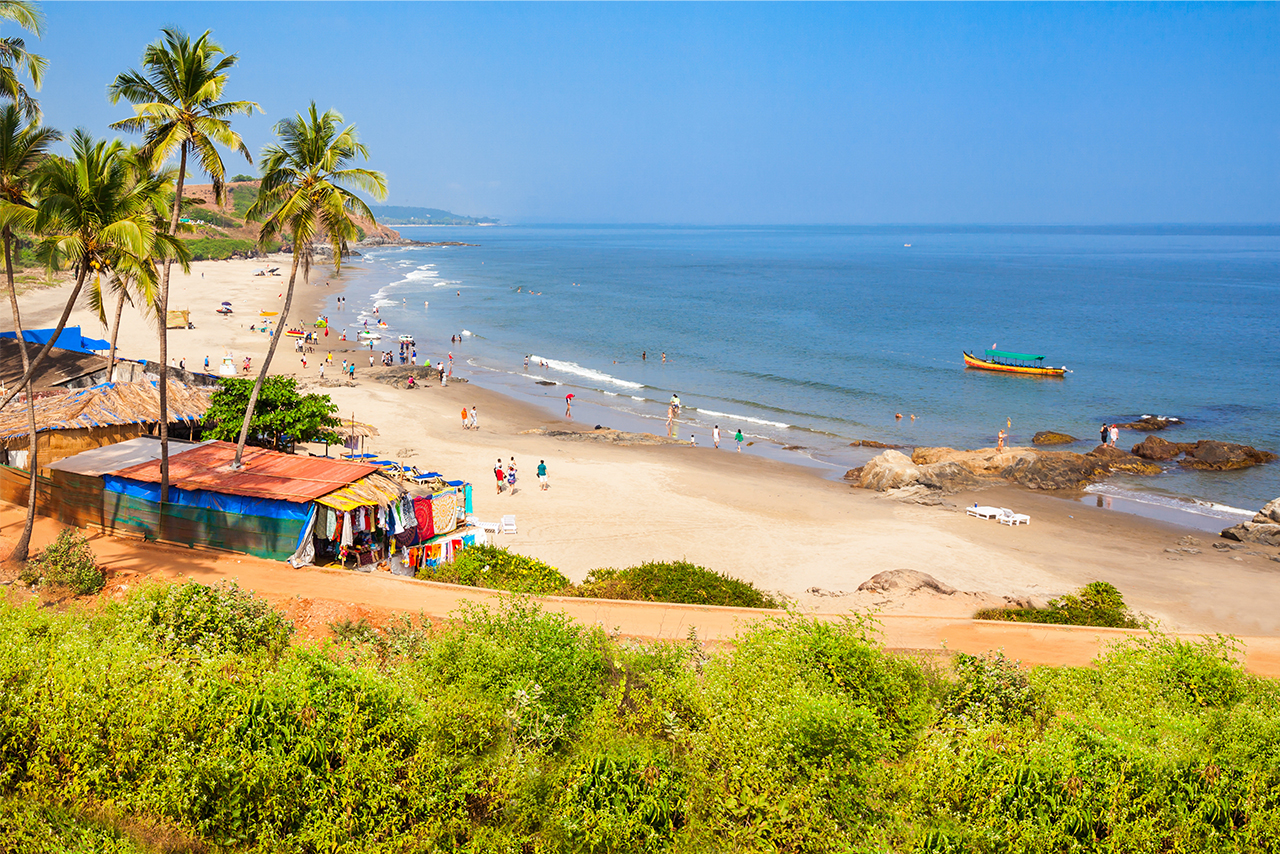Table of Contents
ToggleAirbnb in Maha Goa: 10 Waves of Change That Will Redefine Coastal Luxury & ROI by 2030
When your guest steps off the Mumbai ferry, breathes sea air, and walks into a villa designed like a modern Roman retreat—with art, coral reef views, and a concierge—they won’t ask “Why Maha Goa?” They’ll only ask: “Which villa in Maha Goa?”
In that moment lies the transformation: Airbnb in Maha Goa is no longer a tagline. It’s a brand. Its value. It’s legacy.
This article reveals 10 seismic shifts reshaping the coastal stretch from Sindhudurg to Vengurla—the kind of shifts that turn land into gold, listings into stories, and dreams into sustainable income. Let’s embark.
The 2025 Boom Begins: Why ‘Airbnb in Maha Goa’ Is the Phrase Every Investor Should Know
When digital nomads, weekenders, and heritage travellers start Googling, they will not type “Goa villa” as their first instinct. They will type “Airbnb in Maha Goa.”
Here’s why that matters:
- It’s an identity shift: The boundary of “Goa” is expanding. Maha Goa becomes the coastal umbrella that includes parts of Maharashtra overlooked by earlier travellers.
- It’s first-mover positioning: Whoever optimises first for “Airbnb in Maha Goa” dominates the discovery funnel.
- It encapsulates emotion + promise: “Stay where Goa ends—but the magic begins.”
- It aligns with Google’s post-2024 algorithms that favour regional, experience-based, niche phrasing over generic “Goa villa” terms.
Two infrastructure catapults are driving this: the Underwater Museum off Nivati Rocks (INS Guldar) and the Mumbai–Sindhudurg Ro-Ro ferry. These act as anchors—not just for tourism, but for perception, connectivity, and yield.
As you read on, you’ll see how each of the 10 waves magnifies that phrase, turning it from a keyword to a legacy brand.
5 Reasons Why Maha Goa Is Becoming India’s Hottest Airbnb Destination
Before diving into museum plans or ferry logistics, let’s anchor ourselves in the fundamentals of why Airbnb in Maha Goa is not wishful thinking—it’s a fast manifesting reality.
1. Accessibility Is Finally Aligning
For decades, the Konkan coastline beyond Goa was “too far.” However, with the soon-to-be Ro-Ro ferry (from Mumbai to Sindhudurg), drive times are significantly reduced. Add NH-66 and SH-180 links, and suddenly the coast is reachable, not remote.
2. Signature Experience Anchors Demand
No region becomes famous merely by being pretty. It needs a signature: a dive wreck, a heritage ruin, an underwater garden. The INS Guldar project promises exactly that for Airbnb in Maha Goa—an experience you cannot find elsewhere in India.
3. Govt & Capital Confidence
When state or union governments commit rupees and approvals, confidence follows. The ₹46.91-crore underwater museum budget, the Ro-Ro project approvals, and the push for coastal tourism validate investor trust.
4. Pricing Arbitrage vs Goa
Goa’s real estate and building costs are already premium. But if you can deliver similar—or even differentiated—experiences just across the border, your investment per square foot is lower while market access remains high.
5. Break from Overcrowding
Many tourists now mentally cap Goa’s limits. They yearn for fewer crowds, more authenticity, and hidden beaches. Airbnb in Maha Goa positions your property as that quiet, curated alternative when Goa feels saturated.
Together, these five forces are not subtle—they are convergent. They compress risk, magnify yield potential, and make Maha Goa a branded coastal frontier.
₹46.9-Crore Wonder: India’s First Underwater Museum Will Magnetise Airbnb in Maha Goa
To transform a coastline, you don’t just need good views—you need unforgettable stories. And nothing is more memorable than a sunken warship, resurrected as a reef, inviting divers and dreamers alike.
The Project & Its DNA
- The Indian Navy has transferred INS Guldar, a decommissioned Landing Ship Tank (LST), to Maharashtra Tourism for environmental cleaning, scuttling, and conversion into India’s first underwater museum and artificial reef.
- The project’s budget is ₹46.91 crore.
- The target site is off Nivati Rocks, near Vengurla in Sindhudurg district.
- Water depths, marine clarity, and biodiversity profiles were vetted to ensure the viability of coral growth, scuba access, and diver safety.
Symbolism, Story & Emotional Pull
- This is more than an artefact—it’s a rebirth. A naval vessel transformed into an underwater cathedral of marine life.
- Divers become pilgrims. Photographers, naturalists, storytellers will flock.
- When Airbnb in Maha Goa is searched, many guests will imagine “stay near the wreck”—that mental association is gold.
Impact on Bookings & Pricing
- Early bookings: dive operators, media, and first-access preferential stays.
- Enhanced imagery: underwater videos, 360° tours, Instagram reels, YouTube stories—powerful marketing content for listings.
- Niche guests: trained SCUBA divers, marine researchers, film crews—guests who pay more and stay longer.
- Off-season buffers: dive tourism offsets beach-season dips.
This reef museum becomes the experiential anchor for Airbnb in Maha Goa. It’s not just “another coastal stay”—it’s part of a curated marine narrative.
3 Hours That Change Everything: The Ro-Ro Ferry That Cuts Travel Time—and Multiplies Airbnb Demand
Connectivity is destiny. The launch of the Ro-Ro (Roll-On/Roll-Off) ferry from Mumbai to the Konkan coast flips hours into minutes and intention into action.
Route, Mechanics & Travel Time
- Route: Mumbai → Jaigad (Ratnagiri) → Vijaydurg (Sindhudurg)
- Duration: ~3 to 5.5 hours, depending on port and sea conditions
- Passenger fare: ~₹2,500; Car fare: ~₹6,000
- The vessel accommodates passengers, cars, and two-wheelers—creating a “drive-on, drive-off” sea passage.
Strategic Impacts on Tourism & Airbnb in Maha Goa
- Weekend convertibility: Guests can leave Mumbai in the morning, arrive in time for dinner, stay three nights, and return comfortably.
- Vehicle-enabled stays: Guests bring their gear, bicycles, surfboards, dive gear—no dependence on local rentals. Listings with secure parking gain an unfair advantage.
- Comparative advantage vs road: Highway travel along NH-66 is slow, congested, and fatigue-inducing. The ferry is faster, scenic, and restful.
- Expanding the catchment: Guests from Pune, Nashik, and Surat will prefer the ‘park and stay’ ferry route model.
- Reduced guest friction: Less time lost to transit means more time for relaxation, exploration, and experiences.
In essence, the Ro-Ro ferry turns Maha Goa from “detour coastline” to “destination coastline.” It rewires guest behaviour in your favour and makes Airbnb in Maha Goa a practical, not exotic, choice.
The Airbnb Effect: 7 Stats That Prove Why Maha Goa’s Timing Is Perfect
To make the emotional narrative credible, you need complex numbers. Here are essential statistics that justify the investment thesis behind Airbnb in Maha Goa:
- ₹113 Billion Contribution to Indian GDP in 2024
Airbnb’s India/Oxford Economics study reveals that in 2024, Airbnb activity contributed approximately ₹113 billion to the Indian economy, supporting around 111,000 jobs and generating ₹24 billion in wages. - Domestic Travellers Dominate Growth
In 2024, ~91% of Airbnb guests in India were domestic travellers — a reflection of rising local tourism demand. - Non-Urban Booking Boom
Non-urban gross booking value has tripled since 2019, indicating a growing appetite for offbeat, coastal, and rural stays. - MOPA Airport Growth as Demand Engine
In 2024, Mopa Airport handled ~4.72 million passengers, registering ~26.6% growth YoY. - Shift from Dabolim to Mopa
Dabolim’s passenger traffic declined while total Goa air arrivals rose—indicating traffic is migrating to Mopa. - Airport Capacity Scaling
Mopa is slated to reach an 8 million passenger capacity by mid-2024 to mid-2025. - Occupancy & ADR Uplift Trends
While Goa currently sees an average occupancy of around 45–55% on many Airbnb properties, early micro-markets with experiential differentiation often surpass 65–70% once momentum builds.
Together, these metrics show that Airbnb in Maha Goa is not speculative—but rather aligned with macro tourism growth, infrastructure capacity, and shifts in guest behaviour.
The Golden Triangle: MOPA + Underwater Museum + Ro-Ro = The Airbnb Engine of 2030
You don’t get sustained yield from one anchor. You need a triangle of infrastructure, experience, and connectivity. For Airbnb in Maha Goa, that triangle is already forming:
Corner 1: Mopa Airport
Mopa (Manohar International Airport) is executing its role as the northern gateway. With 4.6 million passengers handled in FY 2024–25, it has already exceeded initial capacity targets.
Mopa is solidifying itself as the airport of choice for travellers to Goa and the adjacent Maharashtra coast.
Corner 2: Underwater Museum (INS Guldar)
This is the experiential magnet. A first-of-its-kind dive wreck museum anchors stay demand on stories, not just beaches.
Corner 3: Ro-Ro Ferry
By linking Mumbai to the Konkan coastline with fast sea transit, the ferry completes the access triangle. It reduces friction, aligns calendars, and enables guests to arrive refreshed.
When all three pillars are in place, Airbnb in Maha Goa becomes more than a listing—it becomes a branded coastal corridor.
Inside the Walls of Luxury: How Cida De Luxora Defines Airbnb-Ready Living
The infrastructure shift sets the stage—but the actors still must be cast well. Cida De Luxora, a project by Nine Divine Developers, is positioned to be the signature residential/rental play in Maha Goa’s first wave.
Project Overview
- Developer: Nine Divine Developers (known for premium, engineered living ecosystems)
- Size & Scale: 11 acres, only 50 villa plots (scarcity + exclusivity)
- Architectural Theme: Roman-inspired forms—arches, colonnades, courtyards, water features
- Mixed-use Integration: Retail bays facing NH-66, office blocks within the gated enclave
- Connectivity: 2 minutes from NH-66, sitting on SH-180 toward the white sand beaches, ~30–40 minutes to Mopa airport, ~10 mins to Sawantwadi railway station
Why Cida De Luxora Is Airbnb-Ready
- High-end finishes & infrastructural robustness — power backup, high-speed internet, plumbing redundancies
- Luxury at scale & privacy — low density, landscaped buffer zones, private entries
- Guest service spine — concierge, internal pathing, support zones
- Synergy with onsite retail/office — hosts can outsource services (F&B, equipment rental, wellness) within the community
- Narrative coherence — Roman + coastal + marine themes tie into the guest psychology of Airbnb in Maha Goa
When travel writers, YouTubers, or Instagrammers seek “best villas in Maha Goa,” a listing inside Cida De Luxora can carry brand gravity.
5 Airbnb Design Secrets for Maha Goa Hosts
To convert guest interest into booked nights, hosts on Airbnb in Maha Goa need intentional design. Here are five design secrets that separate “nice stay” from “memorable stay.”
- Secure Parking + Gear Storage
The Ro-Ro ferry enables guests with cars, surfboards, scuba kits, and bikes. Your property must offer dedicated, secure parking and a dry storage zone for equipment. - Blend Indoor-Outdoor Flow
Design patios, verandas, pergolas, outdoor showers, breezeways—seamless transitions between inside and nature. - Smart Access + Guest Tech
Smart locks, guest apps, concierge chatbots — reduce friction, elevate experience. - Eco-Sensitive Design
Rainwater harvesting, solar panels, passive cooling, landscaping with native species — sustainability becomes a marketing point and cost saver. - Narrative Interiors
Coral motifs, marine textures, underwater photography, and ambient lighting that evokes dusk — every detail reinforces the brand of Airbnb in Maha Goa.
These design choices compound guest delight, reviews, rates, and ultimately valuation.
2025–2030 Forecast: How Airbnb in Maha Goa Will 10× Property Appreciation
Let’s put flesh on the speculative bones. Below is a projected scenario for Airbnb in Maha Goa over the next five years, based on comparable markets, infrastructure timelines, and emerging trends.
Metric | 2025 (Launch Phase) | 2027 (Growth Phase) | 2030 (Mature Phase) |
Avg. Occupancy | 30–45% | 55–65% | 70–80% |
ADR Growth | +5–8% YoY | +8–12% YoY | +10–15% YoY |
Annual Nights Booked | 120–150 | 220–260 | 300–320 |
Capital Appreciation (land + built) | 0.8× | 1.8× | 3×+ |
Yield (net) | 5–7% | 8–10% | 10–12%+ |
These numbers are not fanciful—they mirror trajectories in similar coastal zones post-infrastructure surge (think Alibaug Ro-Ro, Havelock dive reefs, Maldives reef stays).
Risks to manage:
- Delays in museum scuttling or ferry operations
- Regulatory changes in short-term rentals
- Competition as more hosts enter the market
- Natural variability (weather, monsoon, sea conditions)
But the first wave of Airbnb in Maha Goa gains an asymmetric advantage: high visibility, pricing power, guest loyalty, and brand equity.
7 Investor FAQs About Airbnb in Maha Goa
- Is Airbnb legal in Sindhudurg / Maha Goa?
Short-term rentals are allowed under private ownership—ensure municipal and tourism registrations, GST compliance, and safety certifications. - When will the underwater museum open?
The scuttling and reef preparation is planned in phases beginning in 2025–2026. Public dive access may roll out gradually. - When will the Ro-Ro ferry operate reliably?
Service began on September 1, 2025. It may scale frequency, seasonal schedules, and support ports across the Konkan. - What yields can villa owners expect?
In the early years, 30–45% occupancy at strong ADRs. By Year 3–4, net yields in the 8–12% range are possible for well-managed properties. - Which micro-locations offer the best advantage?
Zones within a 10–20 km radius of Nivati Rocks, Vijaydurg coast, or ferry jetties yield premium demand. - How to start safely as a first-time host?
Launch with pilot listings (minimum 3 nights), invest in guest management, maintain a buffer for cancellations, and reinvest in guest feedback. - How to mitigate disruptions (weather, cancellations)?
Implement flexible policies, maintain backup road connectivity, and establish partnerships with Goa-based hotels to accommodate overflow capacity.
The Legacy Play: Why 2025 Is the Only Time to Buy Before the Tide Turns
Every coastal rally has a before and after. For Airbnb in Maha Goa, 2025–2026 is your entry window. After that, listings flood, ADRs escalate, and branding becomes saturated.
Imagine 2030: someone Googles “Airbnb in Maha Goa”—your listing is among the first, your review graph is solid, your booking calendar is complete, and your capital has appreciated 2–3x. That’s legacy.
Own your stake in the future by booking a villa plot at Cida De Luxora—the crown jewel project by Nine Divine Developers. Max 50 villas. Story-driven architecture. Concierge, retail, guest synergy, and unmatched positioning in Airbnb in Maha, Goa.
Visit Cida De Luxora’s Official Website
Explore plots via Total Realty
Don’t just build a villa. Create a legend.




